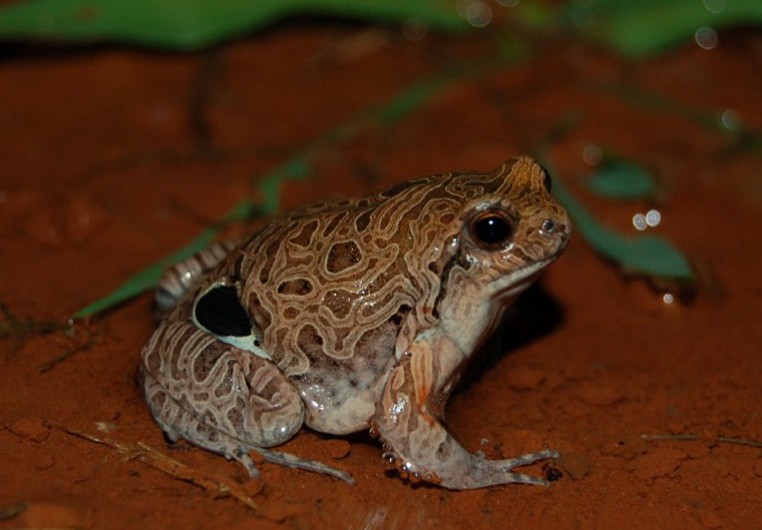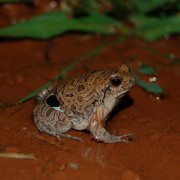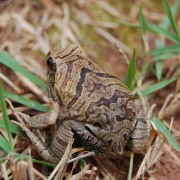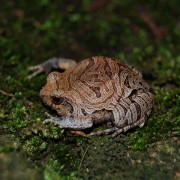Biodiversity
 Cuyaba Dwarf Frog
Eupemphix nattereri | Steindachner, 1863
Cuyaba Dwarf Frog
Eupemphix nattereri | Steindachner, 1863

Characteristics: Medium-size species measuring about 6.0cm in length. This frog's body is disc-shaped, its skin is smooth, its head is large, and snout short. The coloring is usually a burst of gray, and may vary to red. The back portion of its body has two black glands surrounded by white rings ("eye spots", resembling a big pair of eyes). When threatened, it hides its head between its front legs, inflates its body, lifts its back and exposes its glands. If this attempt fails, when biting it the predator will come into contact with the poison glands, causing it to release the frog.
Distribution: This species is distributed throughout Midwestern and Southeastern Brazil, in the states of Mato Grosso do Sul, Goiás, São Paulo, and Minas Gerais, all the way to Eastern Paraguay and Eastern Bolivia.
Habitat: Open formations, in savannas, scrublands, forest edges, grasslands, lakes, ponds, rivers and lentic streams, and it may also be found in forested regions.
Habits: Crepuscular, nocturnal, terrestrial, and aquatic. It prefers low vegetation (grasses) near streams and muddy puddles.
Diet: Small insects and arthropods.
Breeding: Oviparous, and the males vocalize in duets or trios on the banks of water bodies, in burrows built in the mud on the banks in open areas. Its reproduction is quite prolonged. Eggs are laid in foam nests on the water.
UFRA: Species seen in Organic sugarcane fields, Wetlands with herbaceous plants, Wetlands with riparian forests, and Drainage Ditches.






